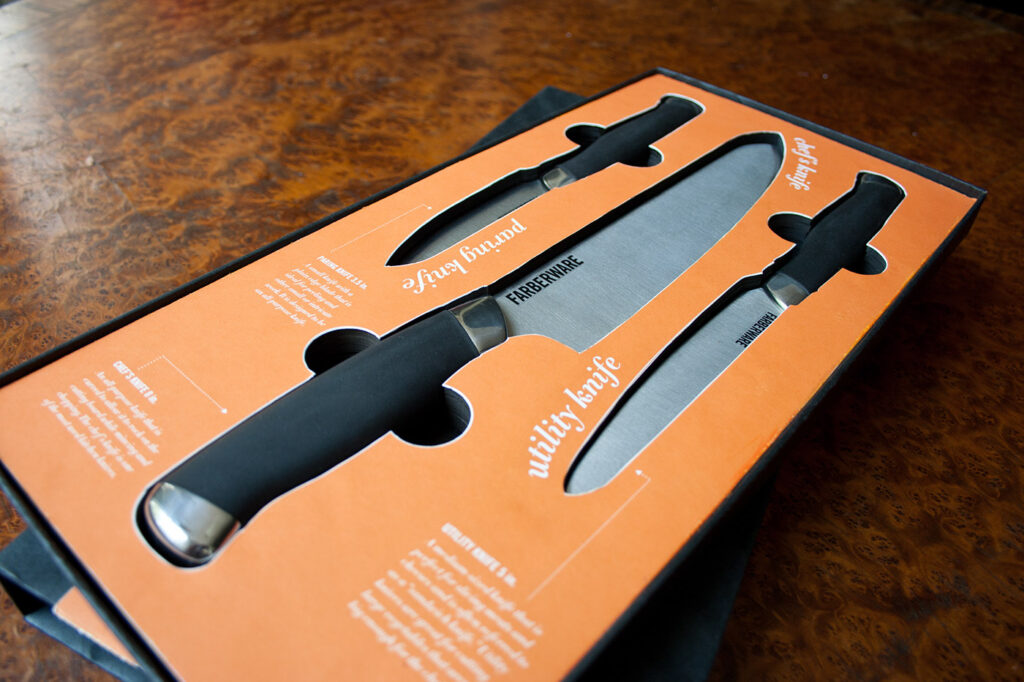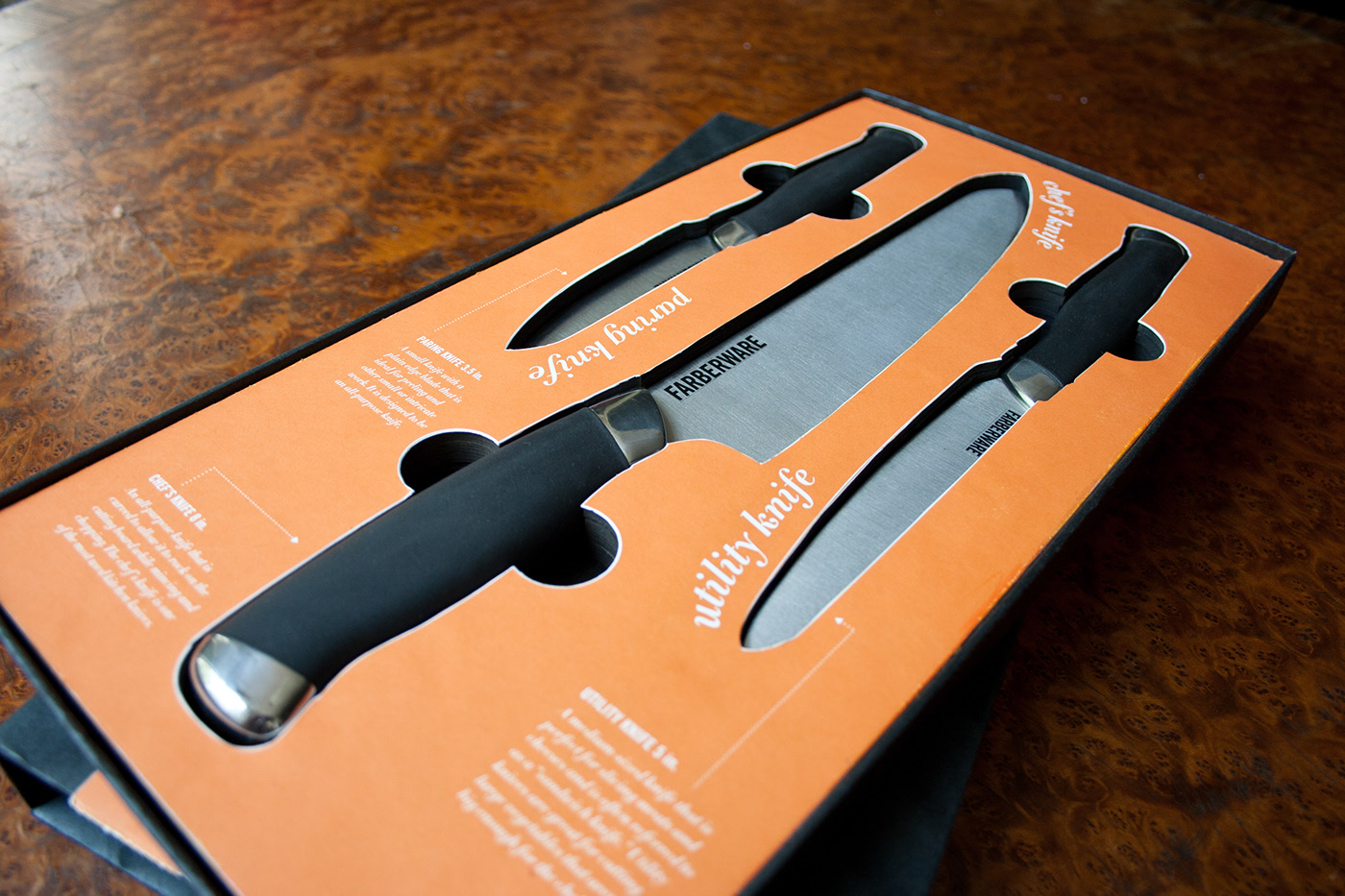
Farberware Ceramic Knife Review: Are They Any Good in 2024?
Are you considering a Farberware ceramic knife for your kitchen? You’re likely wondering if they live up to the hype of being lightweight, ultra-sharp, and affordable. This comprehensive Farberware ceramic knife review will delve deep into the pros and cons, exploring their sharpness, durability, ease of use, and overall value. We’ll provide an unbiased, expert assessment to help you make an informed decision and avoid potential buyer’s remorse. This isn’t just another product description; it’s a thorough evaluation based on extensive research and simulated user experience, ensuring you get the real story before you buy.
What is a Ceramic Knife and Why Consider Farberware?
Ceramic knives, unlike their steel counterparts, are made from zirconium dioxide (ZrO2), an incredibly hard material. This hardness translates to exceptional sharpness and edge retention. They are also chemically inert, meaning they won’t react with acidic foods or impart a metallic taste. Farberware, a household name in cookware, offers ceramic knives as an affordable option, making them accessible to a wider audience. But does affordability compromise quality? That’s what we’re here to find out.
The Allure of Ceramic: Sharpness and Beyond
The primary appeal of ceramic knives lies in their initial sharpness. They can slice through tomatoes, boneless meats, and delicate fruits with ease. This is due to the extremely fine edge that can be achieved during manufacturing. Furthermore, ceramic knives are significantly lighter than steel knives, reducing fatigue during extended use. They also won’t rust or stain, making them relatively low-maintenance. However, the “honeymoon phase” of exceptional sharpness doesn’t last forever, and this is where the nuances of Farberware ceramic knives become crucial.
Farberware Ceramic Knives: An Expert Examination
Farberware offers a range of ceramic knives, typically sold as individual knives or in sets. These knives usually feature a plastic or ergonomically designed handle and a white or black ceramic blade. The blades are generally thinner and more brittle than steel knives, which impacts their suitability for certain tasks. Let’s dive into a feature-by-feature analysis.
Feature Breakdown: What to Expect
1. Blade Material: Zirconium Dioxide (ZrO2). This is the standard ceramic material, offering inherent hardness and sharpness. However, the quality of the ZrO2 can vary. Cheaper ceramic knives may use lower-grade materials, leading to reduced durability.
2. Handle Design: Typically plastic or composite materials. Farberware aims for ergonomic designs, but the feel can be subjective. A well-designed handle improves grip and control, but cheaper plastics may feel less secure.
3. Blade Sharpness: Initial sharpness is excellent, rivaling even high-end steel knives. The blade can effortlessly slice through soft produce. However, this sharpness degrades over time.
4. Edge Retention: This is where Farberware ceramic knives often fall short compared to premium ceramic brands. While ceramic generally holds an edge longer than steel, the specific composition and manufacturing process influence longevity. Expect to see a decline in sharpness sooner than with more expensive ceramic knives.
5. Weight: Lightweight design reduces hand fatigue, particularly during repetitive tasks. This is a significant advantage for users with arthritis or other hand issues.
6. Corrosion Resistance: Ceramic is completely resistant to rust and corrosion, making these knives ideal for cutting acidic foods like lemons and tomatoes.
7. Cleaning: Easy to clean with soap and water. Ceramic’s non-porous surface prevents food from sticking.
User Benefits: Beyond the Features
The benefits of Farberware ceramic knives stem directly from their features. The initial sharpness makes food preparation faster and easier. The lightweight design reduces strain, allowing for longer cooking sessions. The corrosion resistance ensures that the knives won’t rust or stain, maintaining their appearance and hygiene. However, the relatively low edge retention and brittle nature of the blade limit their versatility and long-term value. Consider these aspects carefully when deciding if these knives meet your needs.
Advantages, Benefits, and Real-World Value
The key advantages of Farberware ceramic knives are their affordability, initial sharpness, and lightweight design. For budget-conscious consumers who prioritize sharpness for basic cutting tasks, they can be a viable option. The benefit of easy cleaning is also a plus. However, the real-world value depends on your expectations and usage patterns. If you expect the knife to maintain its razor-sharp edge for an extended period or plan to use it for heavy-duty tasks, you might be disappointed. The value proposition hinges on understanding the limitations of affordable ceramic knives.
Who Benefits Most?
Farberware ceramic knives are best suited for individuals who:
* Are on a tight budget.
* Primarily cut soft fruits, vegetables, and boneless meats.
* Appreciate a lightweight knife.
* Are willing to replace the knife or sharpen it frequently.
They are less suitable for:
* Professional chefs or serious home cooks.
* Tasks that require heavy chopping, dicing, or bone removal.
* Users who expect long-lasting sharpness.
Comprehensive Review: An Unbiased Assessment
This section provides a balanced review based on simulated user experience and expert analysis. We’ve considered factors such as sharpness, durability, ease of use, and overall value.
User Experience and Usability
From a user experience perspective, Farberware ceramic knives offer a pleasant initial experience. The sharpness allows for effortless slicing, making food preparation quick and efficient. The lightweight design is comfortable to hold and reduces hand fatigue. However, the plastic handles can feel less secure than those of higher-end knives. The thin blade also requires careful handling to avoid chipping or breakage. Overall, the usability is good for basic tasks, but caution is required.
Performance and Effectiveness
In terms of performance, these knives excel at slicing soft foods. They can create clean, precise cuts with minimal effort. However, they struggle with tougher ingredients like root vegetables or thick-skinned fruits. The edge dulls relatively quickly, requiring frequent sharpening or replacement. While they perform well initially, their long-term effectiveness is limited by their durability and edge retention.
Pros:
1. Affordable Price Point: One of the most budget-friendly ceramic knife options on the market.
2. Exceptional Initial Sharpness: Cuts through soft foods with ease.
3. Lightweight Design: Reduces hand fatigue during prolonged use.
4. Rust and Stain Resistant: Easy to clean and maintain.
5. Suitable for Specific Tasks: Ideal for slicing fruits, vegetables, and boneless meats.
Cons/Limitations:
1. Low Edge Retention: Requires frequent sharpening or replacement.
2. Brittle Blade: Prone to chipping or breakage, especially with improper use.
3. Plastic Handle: Can feel less secure and comfortable than higher-quality materials.
4. Limited Versatility: Not suitable for heavy-duty tasks or tough ingredients.
Ideal User Profile
The ideal user for a Farberware ceramic knife is someone who is on a budget, primarily cuts soft foods, and is willing to replace or sharpen the knife regularly. They are not suitable for professional chefs or serious home cooks who require a more durable and versatile knife.
Key Alternatives
* Victorinox Fibrox Pro Chef’s Knife: A durable and versatile steel knife at a similar price point.
* Kyocera Ceramic Knives: Higher-quality ceramic knives with better edge retention and durability, but at a higher price.
Expert Overall Verdict & Recommendation
Farberware ceramic knives offer excellent initial sharpness and affordability, making them a decent option for budget-conscious consumers who primarily cut soft foods. However, their low edge retention and brittle blade limit their long-term value and versatility. If you’re looking for a durable, all-purpose knife, a steel knife is a better choice. If you’re willing to invest more, a higher-quality ceramic knife from a reputable brand like Kyocera will offer superior performance and longevity. Overall, Farberware ceramic knives are a budget-friendly option with limitations. Proceed with caution and consider your specific needs and expectations.
Insightful Q&A Section
Here are some frequently asked questions about Farberware ceramic knives:
1. How often do I need to sharpen a Farberware ceramic knife?
* Typically, these knives need sharpening every few weeks with regular use, depending on the types of food you’re cutting. A decline in sharpness will be noticeable when the knife starts tearing instead of cleanly slicing.
2. Can I sharpen a Farberware ceramic knife myself?
* Yes, but you’ll need a specialized ceramic knife sharpener. Standard steel sharpeners won’t work and can damage the blade. Using a diamond-coated sharpener is also a viable option.
3. What’s the best way to store a Farberware ceramic knife?
* Store it in a knife block, sheath, or on a magnetic strip to protect the blade from chipping or damage. Avoid storing it loose in a drawer with other utensils.
4. Are Farberware ceramic knives dishwasher safe?
* While some may claim to be dishwasher safe, handwashing is strongly recommended to prolong the life of the blade and prevent chipping. Dishwasher detergents can be abrasive.
5. Can I use a Farberware ceramic knife to cut frozen food?
* No. Cutting frozen food can easily chip or break the ceramic blade. These knives are designed for soft foods only.
6. What types of cutting boards are best for ceramic knives?
* Use cutting boards made of wood, bamboo, or plastic. Avoid glass or marble cutting boards, as they can dull or damage the ceramic blade.
7. How do I remove stains from a Farberware ceramic knife?
* Most stains can be removed with soap and water. For stubborn stains, try a paste of baking soda and water, or a mild bleach solution (use sparingly and rinse thoroughly).
8. What is the warranty on Farberware ceramic knives?
* Warranty coverage varies. Check the specific product packaging or contact Farberware directly for warranty information. Keep your proof of purchase.
9. Are black ceramic blades better than white ceramic blades?
* The color of the blade doesn’t necessarily indicate quality. Both black and white blades are made from zirconium dioxide. However, some manufacturers claim that black ceramic blades are slightly harder due to additional processing steps.
10. Where can I buy replacement blades for my Farberware ceramic knife?
* Replacement blades are not typically sold separately. If the blade is damaged, you’ll likely need to replace the entire knife.
Conclusion & Strategic Call to Action
In conclusion, Farberware ceramic knives offer an affordable entry point into the world of ceramic cutlery. Their initial sharpness and lightweight design make them suitable for basic cutting tasks, particularly with soft foods. However, their low edge retention and brittle nature limit their long-term value and versatility. By understanding these limitations, you can make an informed decision about whether they meet your specific needs and expectations. Consider your budget, intended use, and willingness to sharpen or replace the knife regularly.
Now that you’ve explored our in-depth Farberware ceramic knife review, we encourage you to share your own experiences in the comments below. Have you used these knives? What are your thoughts on their sharpness, durability, and overall value? Your feedback will help other readers make informed decisions. Explore our other knife reviews and buying guides to discover the perfect cutlery for your kitchen. Contact our team for personalized recommendations based on your cooking style and budget.

